Giza Pyramids
Having made my arrangements for the day I headed off to the only stop of the day, “the pyramids” the Giza Pyramids need no introduction from me, of the 8 wonders of the ancient world it is the only one standing in a land that ruled the world and been conquered many times over. One thing I will add is that I don’t think the Ancient Egyptian civilization is given the credit it is due these days. Why, because in today’s world where we are constantly overwhelmed by marketing, consumerism, technology and everything glitzy this and other ancient civilizations, monuments and structures seem dull and faded by time. Most if not all are a far cry from what they looked like thousands of years ago and perceived as dull and lifeless are now compared to billboards and buildings of modern times with bright colours and lights, we don’t seem to like old things these days let alone appreciate them.
Whilst almost everywhere around the world people were living in caves, single-story mud buildings, tents or stick structures Ancient Egyptians had cities, plumbing, infrastructure, commercial farming, building canals, altering the landscape and were building super structures of which would be the biggest and highest for 3800yrs – till the Lincoln Cathedral in the 1300.

The Giza Plateau mainly consists of the Great Pyramid (Pyramid of Khufu / Pyramid of Cheops) and it’s three satellite pyramids, Pyramid of Khafre (Khufu’s son) which is the second biggest – it looks bigger but that’s just an illusion as it is built on higher ground, Pyramid of Menkaure and its three satellite pyramids, The Sphinx and around all the above are temples, causeways, burial chambers and boat pits but that’s not all. Most of the area is full of other tombs of esteemed people and on the periphery is mostly of workers, thousands of them! The figures range from 10 000 – 100 000 people are buried in the Giza Plateau complex. There is so much more it would take an anthology to list everything.
The plateau covers a vast area, I was surprised and disappointed that so much of it was closed and that such a small fraction was excavated – that which is and not either open to the public or not visited is being engulfed by the desert. As with all major tourist attractions there is security but for the area it covers there is little and considering it is the most visited Egyptian tourist site it wasn’t as busy as I had expected – my taxi driver said things are picking up since the revolution but still quite compared to prior.
I knew my first visit to the pyramids would be just to get my bearings and do the obligatory tourist things like riding a camel going inside the Great Pyramid (Pyramid of Khufu / Pyramid of Cheops) and just taking it in. My guide, Hussein, nice guy but all the guides that I heard really only give the general information as even that they differ in what they say. I wasn’t there to get a history lesson I had read and watch more about ancient Egypt than anyone I know.
I most certainly had many surreal moments riding my camel, I called him Gavin, he just fitted the name. Thousands of years ago this was the greatest of kingdoms, building extraordinary structures like no other in the world whether it be in size, sophistication and such scale the likes the world has never even till today been able to replicate. I have seen the tools they used and it just boggles the mind, how!?
Pyramid of Khufu / Pyramid of Cheops
Base of 230m, height of 146 then, now 138m and 2 583 283 cubic meters, 5.9 million tons and built over 10 – 20 years around 2560 BC. To put that into context this means placing approximately 800 tons of stone every day, it has a total of 2.3 million blocks with an accuracy between each stone of 0.5 millimeters. It is build of white limestone but there is lots of granite used inside some weighing between 25 – 80 tons.

The entrance to the pyramid is 17m above ground and the stair leading to it are cur out of the existing stonework; the entrance currently used is thought to have been made around 820AD for 27m through the stone. The passageway is like entering a cave which I could almost stand upright in but then you hit the main shaft! Just under a meter high and just over a meter wide going down at 26 degrees you go down 28m (the shaft is actually 105m long to the lower chamber which is not open to the public) when you get to a hole which used to be blocked by a stone slab this leads to an ascending passage of 39m and about the same angle and proportions as the descending passage. The distance of both are not long but combined with the heat and lack (non) of ventilation it becomes quite strenuous and quite a few people were stopped along the way to take a breather. The passages are neatly cut, not perfect but bloody impressive considering most of it is pink granite, I think. At the end of the ascending passage you reach the Grand Gallery, and it is grand even in today’s terms! At this point you should be able to go straight to the Queens Chamber but this is closed to the public.
Grand Gallery
Carries on ascending at about the same angle and is where for the first time you can stand up…the ceiling is 8.6m high! After crouching for so long in a confined space it jolts the sense to find a huge space inside what has felt like a cave! The Great Gallery is 46m long and just over 2m wide, the corbelled ceiling has seven steps with a flat top. The proportions of everything is huge, I have no idea how big the stone are in the gallery but my guess is tons per stone.

Kings Chamber
Is 10m long, 5m wide and almost 6m high and granite throughout, the roof has 9 slabs with a total weight of 400 tons! Inside at the far end of the entrance to the chamber is the sarcophagus still intact except for one of the corners, the edges have also been chipped and worm which could be because of the millions of tourists or tomb robbers &/or a combination of both. After such an elaborate and grandiose structure with all it’s tunnels, secret doors and blocked passages I had a feeling of loneliness for the pharaoh as his sarcophagus lay in the dark corner of this granite mausoleum. The sarcophagus is bigger than the passageways so it must have been put there before it was built, another strange notion to be alive whilst they are building your tomb and getting to see the actual place your coffin will be put into. I left the chamber and headed out, as excited as I was to see the pyramid and go inside I was also visiting a tomb where someone was buried, not to different from visiting a graveyard.
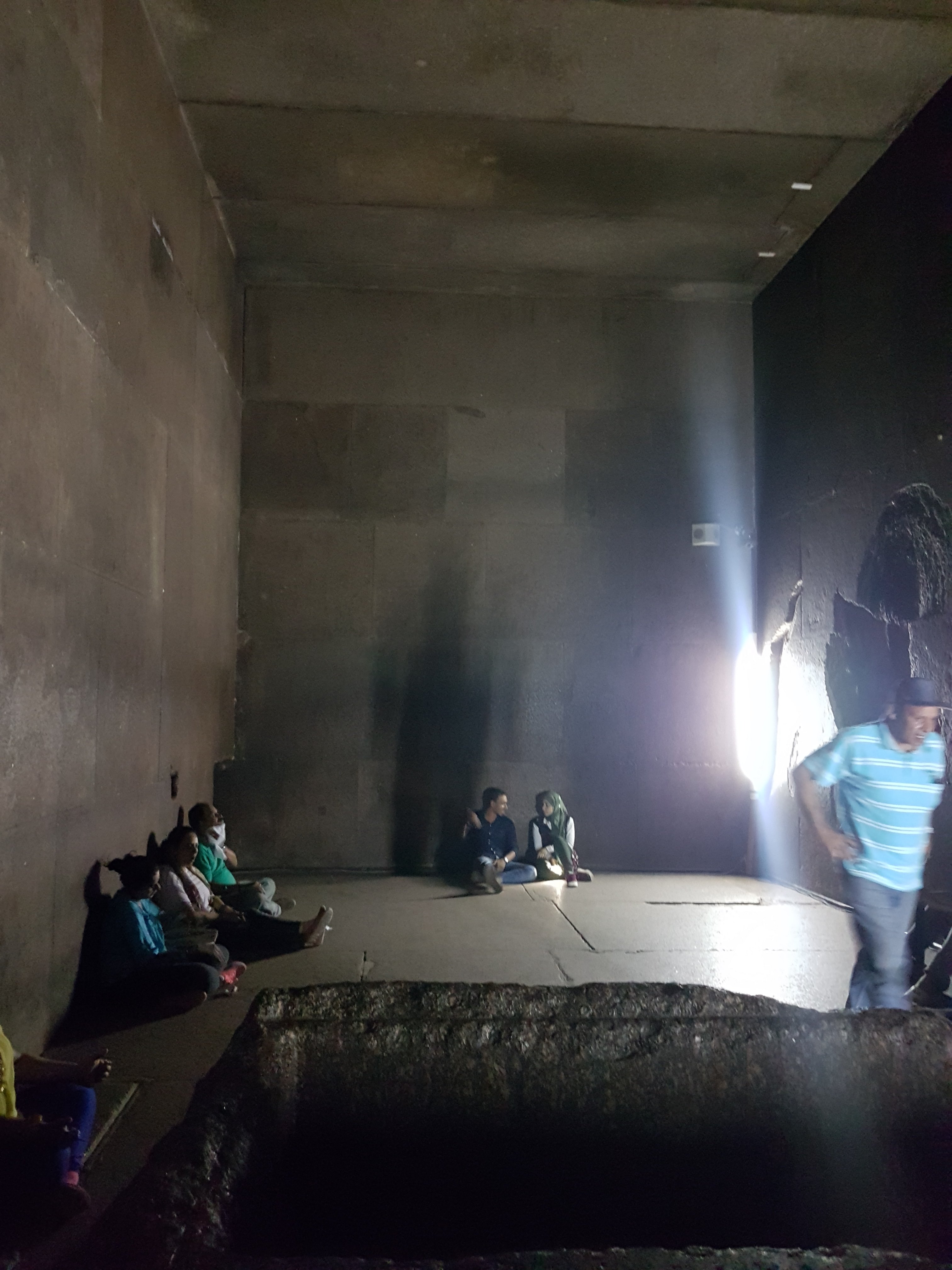
Hetepheres I
Around the pyramid are the three satellite pyramids (Queen’s Pyramids – there used to be four but there is almost nothing left except a few base stones) and only the floor of the Pyramid Temple with its black basalt floor. Of the satellite pyramids the most Northern was 30m high with a 49m base now most is missing and belongs to Hetepheres I who was likely Sneferu’s wife and Khufu’s mother. The shaft into the pyramid is about 23m where it makes a left turn (if you are walking down face first), there is a little platform no more than 1 square meter and then anther shaft which only 3-4m and you enter the main chamber. The chamber is in a bit of a mess and there are quite a few theories that the Queen was reburied here or that her tomb was robbed and she was reburied.
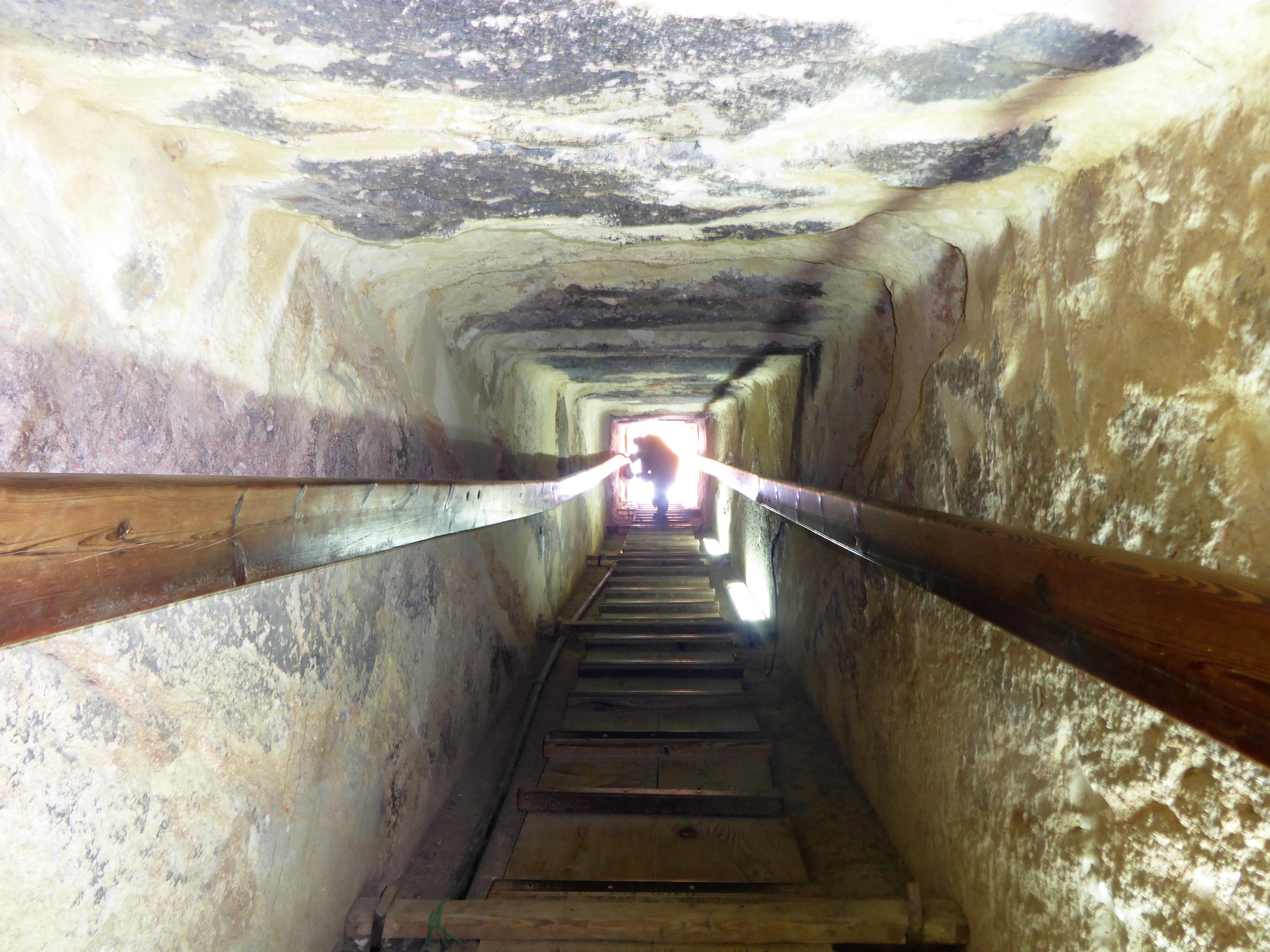


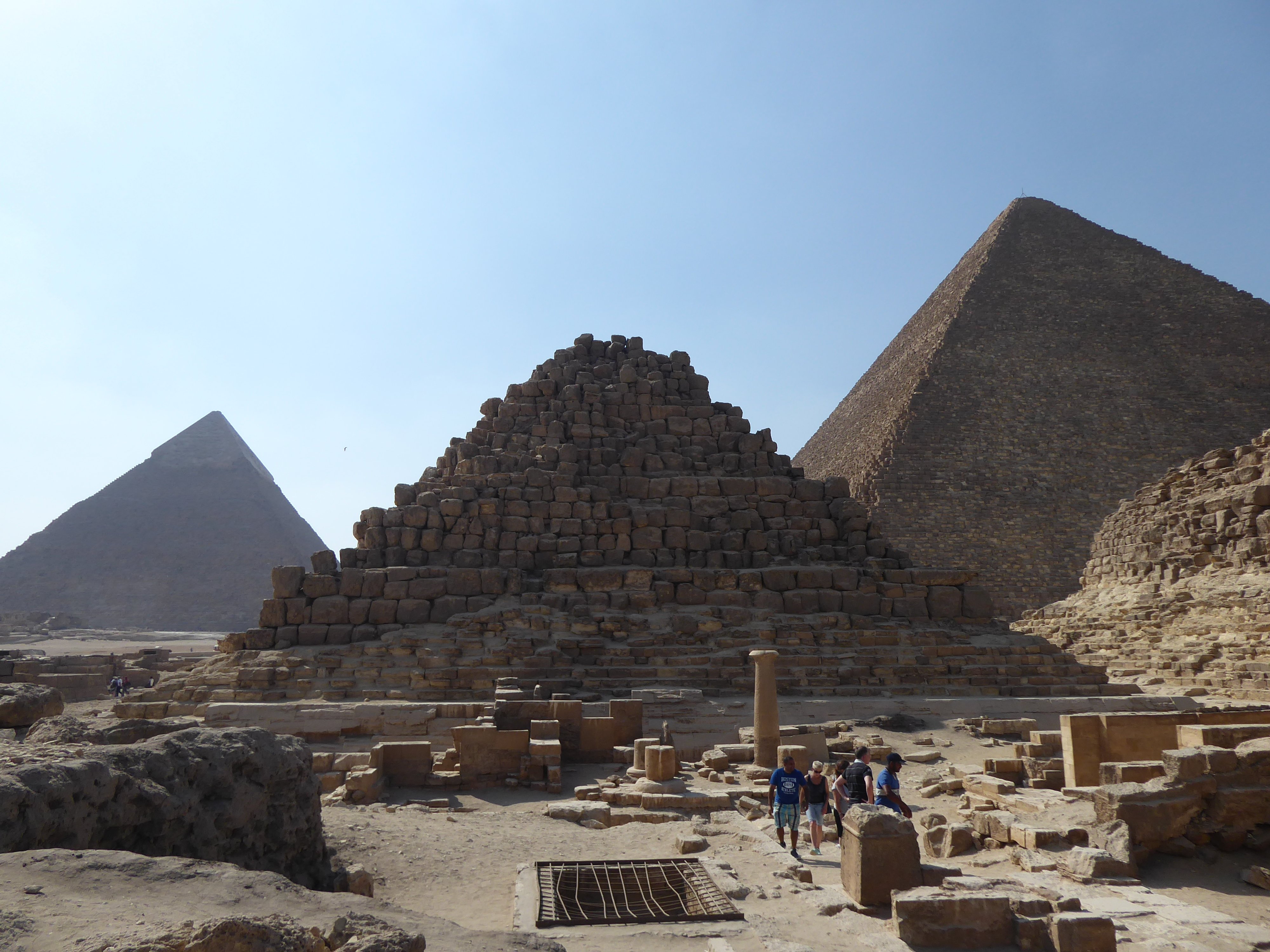
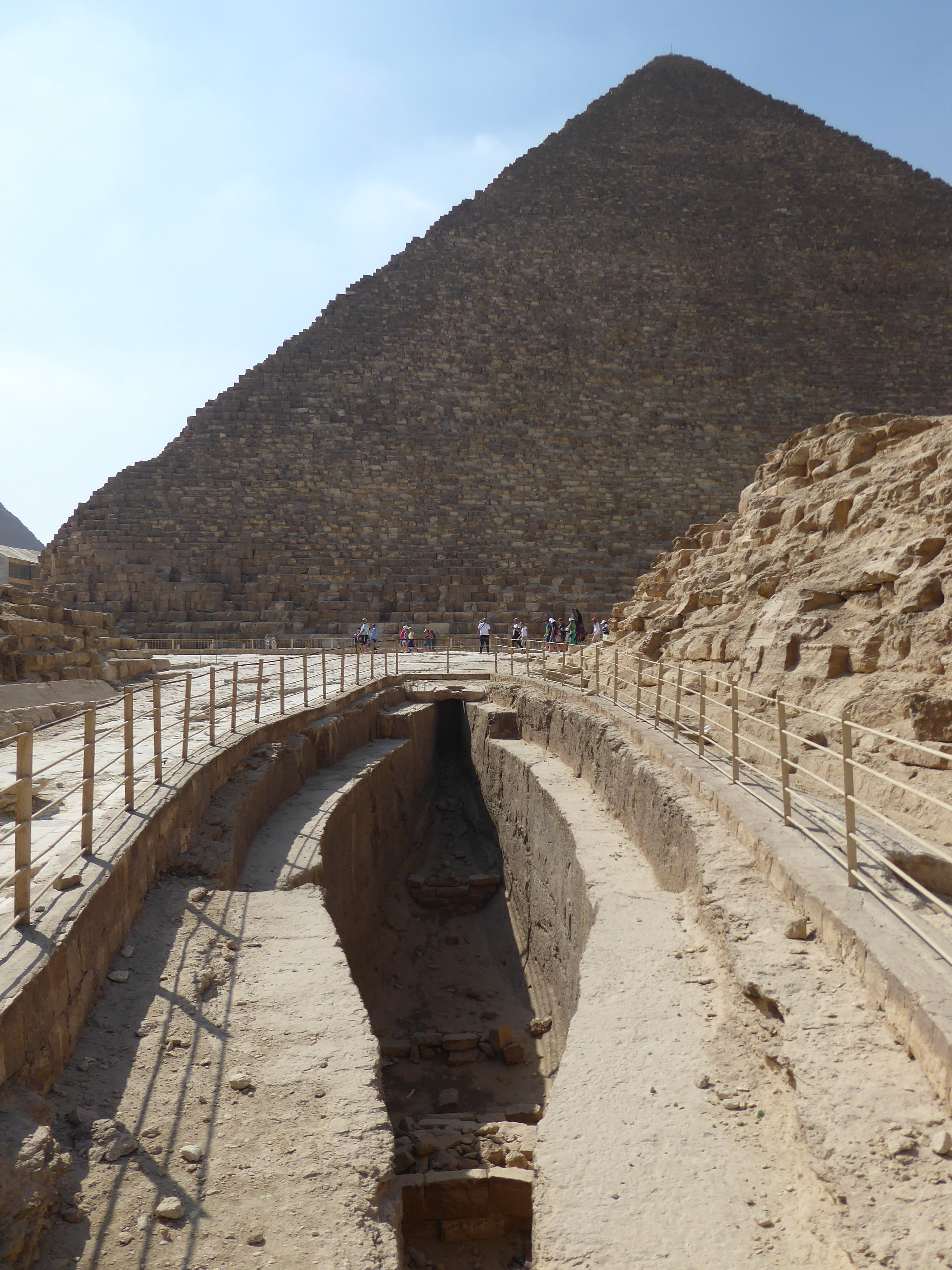
Around the pyramid there are three boat-pits some North-South facing and others East-West with their positions not seeming to relate to each other – spread far apart. The pits are dug out of the bedrock and what struck me was how shallow they are; the hypothesis for this is that there used to be a structure above them but now no trace remains. This is also supported by a forth pit that was found intact only a few meters away from the pyramid on the South site. The pit was covered with about 40 stone slabs weighing up to 15 tons each, inside was 1224 pieces of cedar wood ranging from 23m to 10cm – it took 14 years to reconstruct and is now in a purposefully built museum. Whilst building the museum another intact pit was found next to it which was left alone till 2011 when excavation began.
The Boat
It is 43m long and 5.9m wide it’s beautifully constructed. Some of the original ropes were also found and are on display. To help with preservation the temperature in the museum is hot, I thought hotter than outside! This boat was part of the complex of the pyramid and them along with everything else (no looted long ago) was all to play its part in the Pharaoh having all the luxuries in the afterlife as he has in the present. One of the original oars is also on display, the curves and craftsmanship of the boat are striking and elegant, you could imagine it drifting down the Nile in all its stately regalia, the Bugatti of the ancient times.

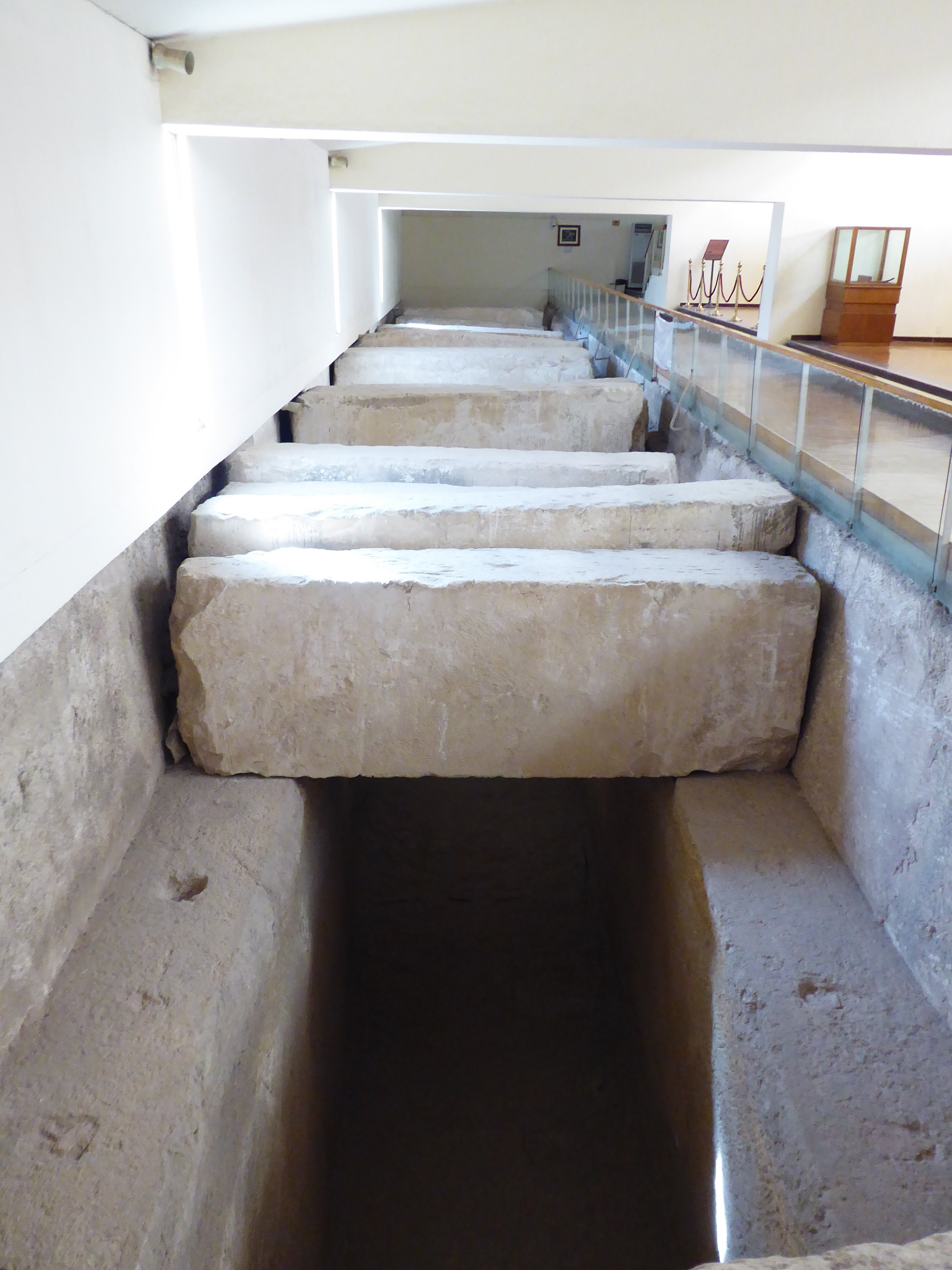


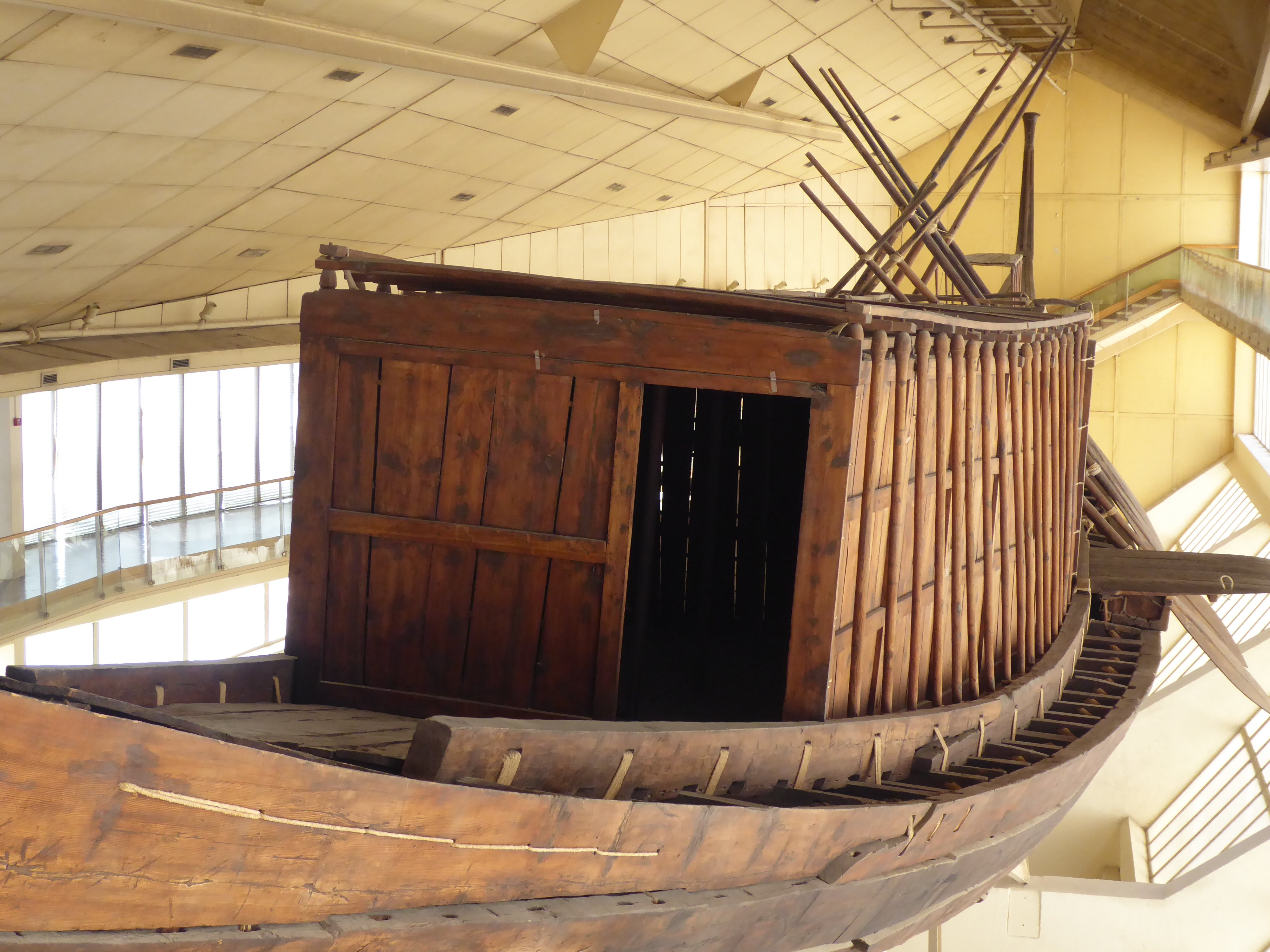
Pyramid of Khafre
I can’t say much about the pyramid as I didn’t go inside, good reason to go back! As I mentioned it looks bigger than that of his father Khufu and that’s because it is build on a higher part of the plateau. 136m high (was 143m), 215m base, 2 211 096 cubic meters and built with white limestone however the base course is of pink granite. There used to be a satellite pyramid on the South side but nothing remains bar a few stones and part of the foundation. From the pyramid, not much is left of the approx. 500m causeway leading to Khafre’s temple; massive limestone walls and pillars of once was an integral part of Khafre’s burial complex. Out of all the surrounding structures which would have filled this area like an necropolis this is about the best preserved building, no decoration is left but large parts of the skeletal structure does.

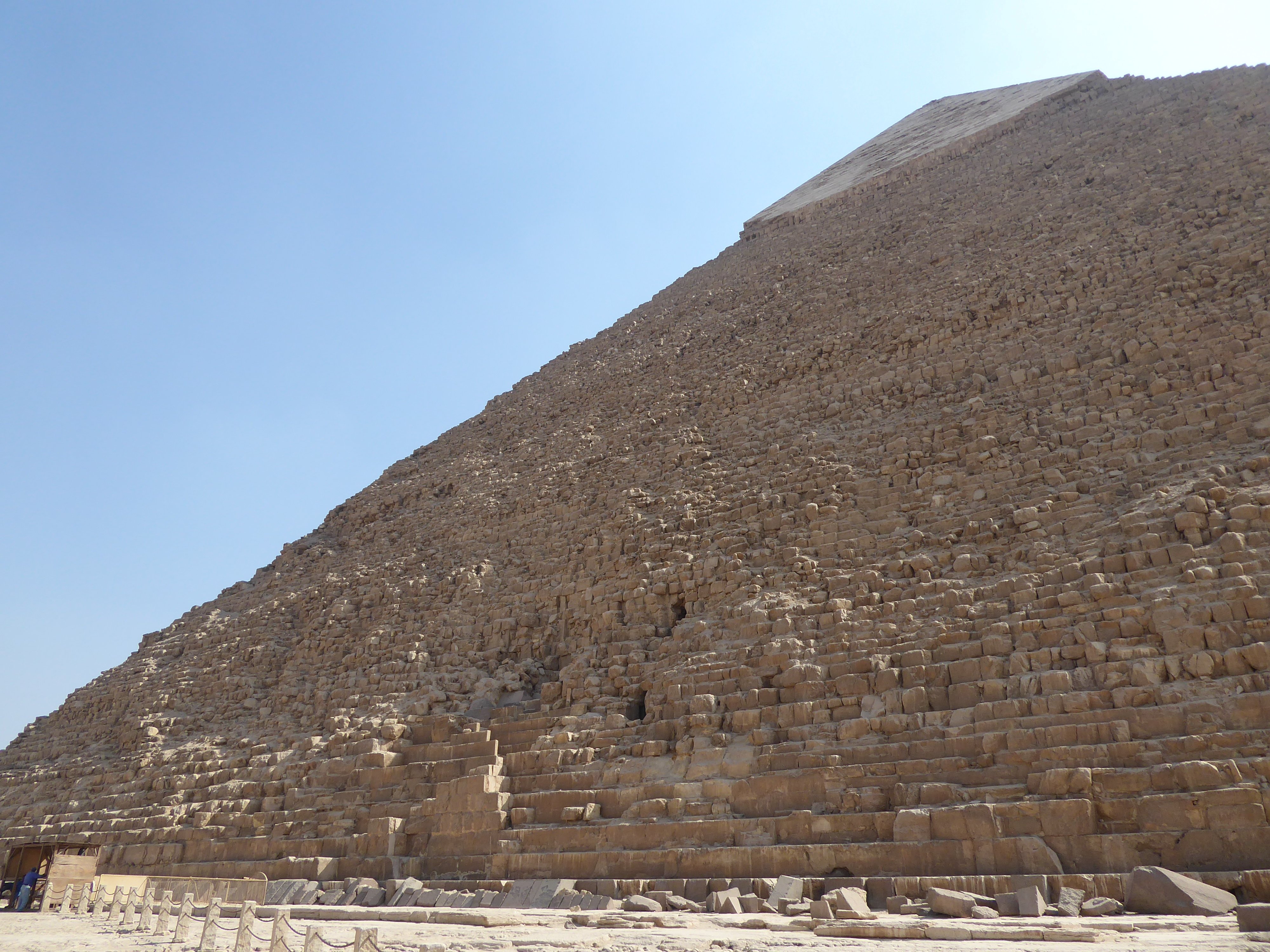
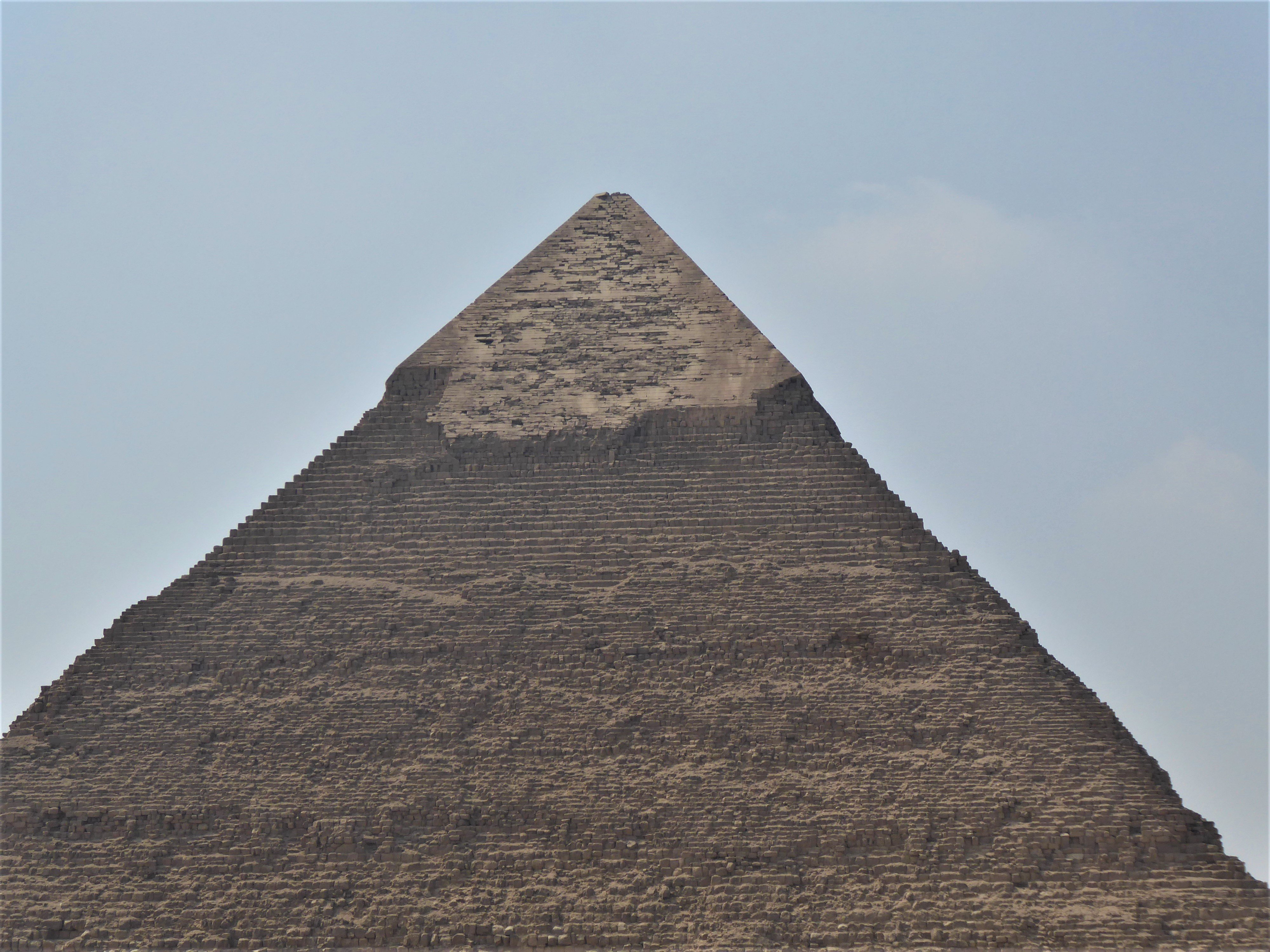
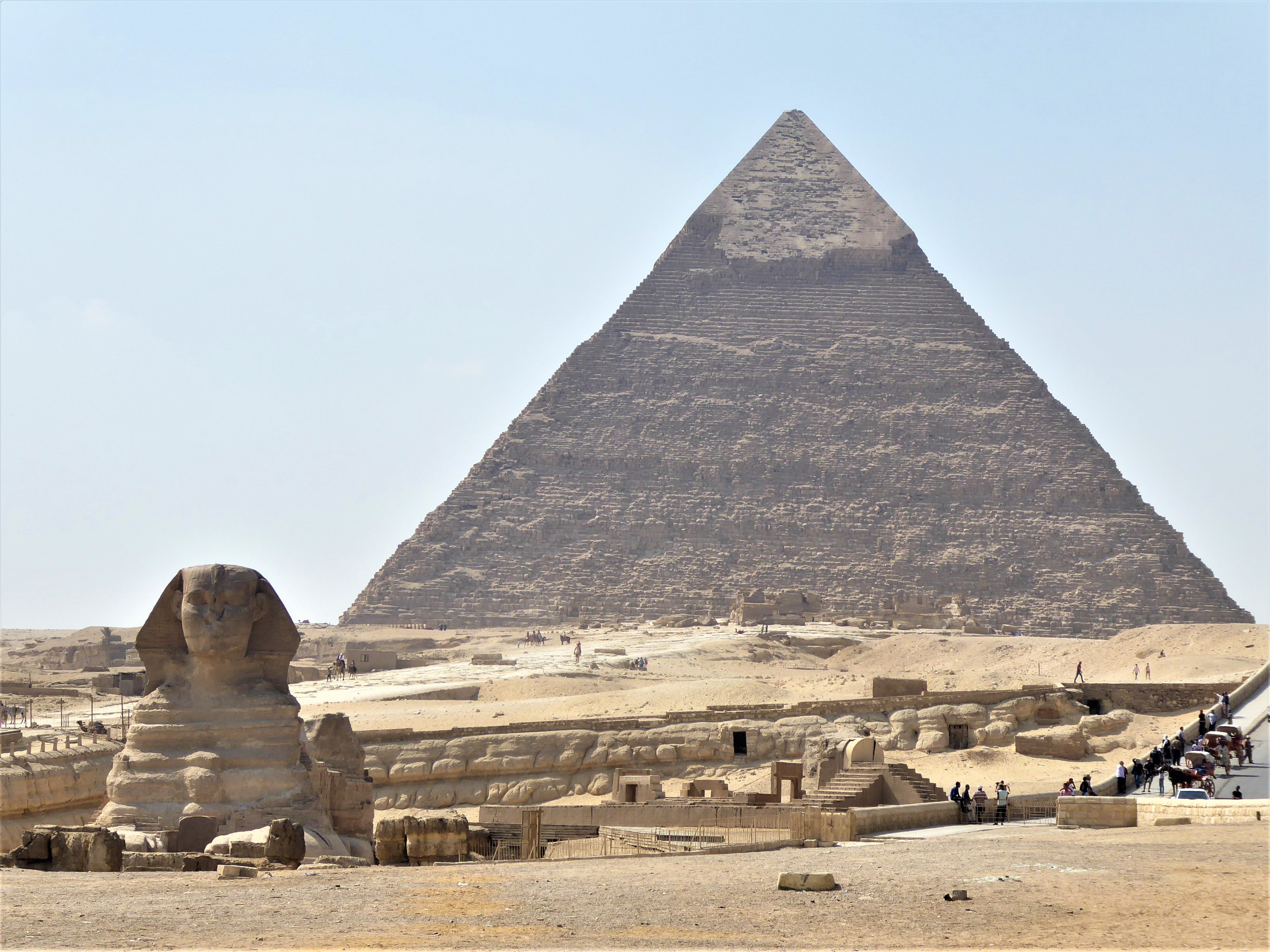
Sphinx
As you follow the Khafre causeway you head straight to the back of the Sphinx; the temple is on the other side just off-centre of its right paw. As you go around the Giza Plateau you cannot help but get a regular glimpse of the Sphinx especially as the head peeks out. Located in a basin cut our of the bedrock the top of the body (spine of the lion) is about flush with the surrounding plateau. Looking at everything else the Ancient Egyptians built I can’t see that the head is original, it’s totally out of proportion for the body. What ever the function or reason for the Sphinx a lot of effort went into digging such a huge hole and building this statue/temple/monument. Restoration work has been going on for quite some time and the newer stone is very distinguishable, I don’t know if they are planning on restoring the face. The nose is missing and so is the beard, the latter is in the British Museum. They have closed off the Sphinx so you can’t get close to it but close enough to achieve a childhood dream.
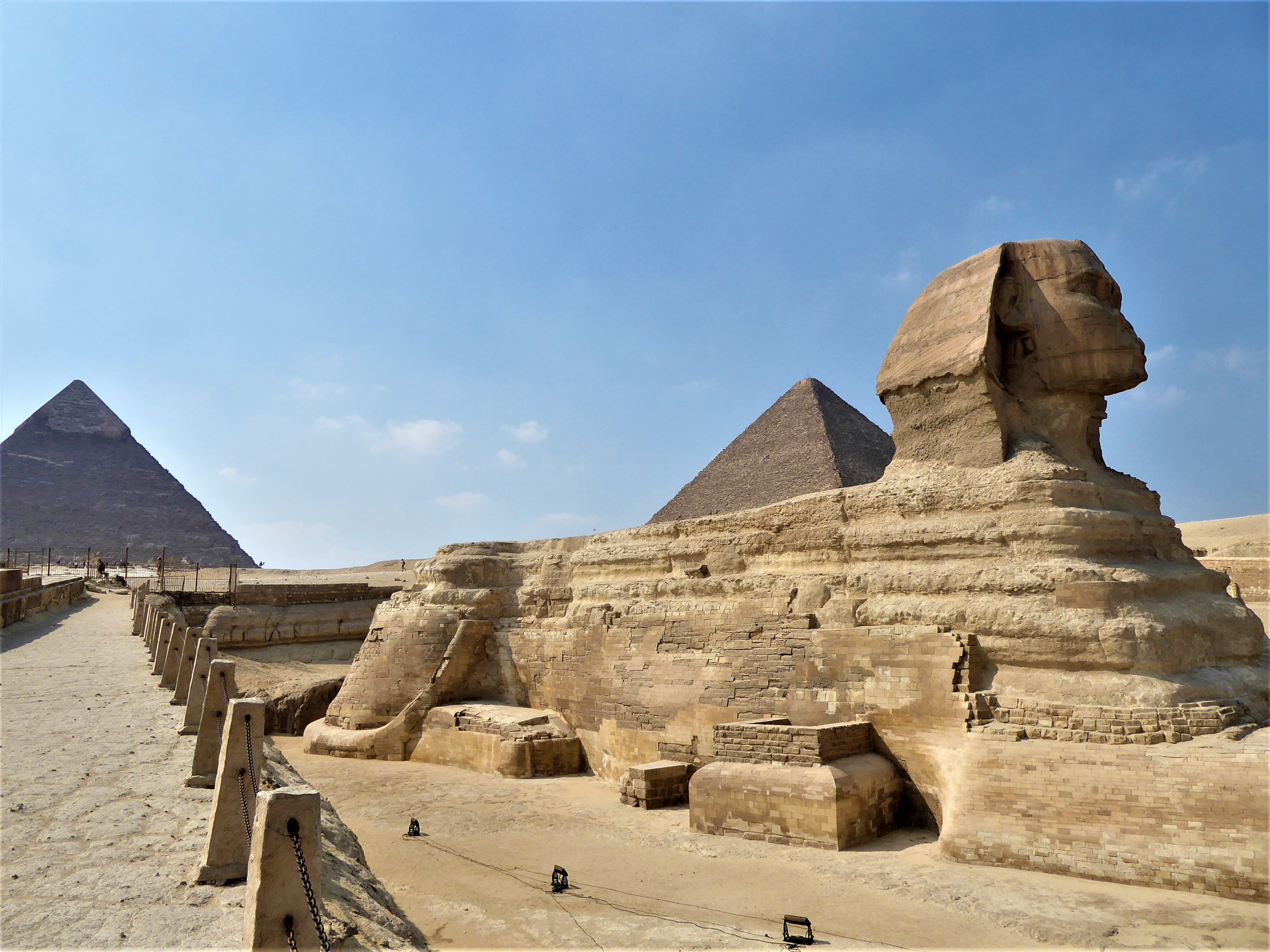

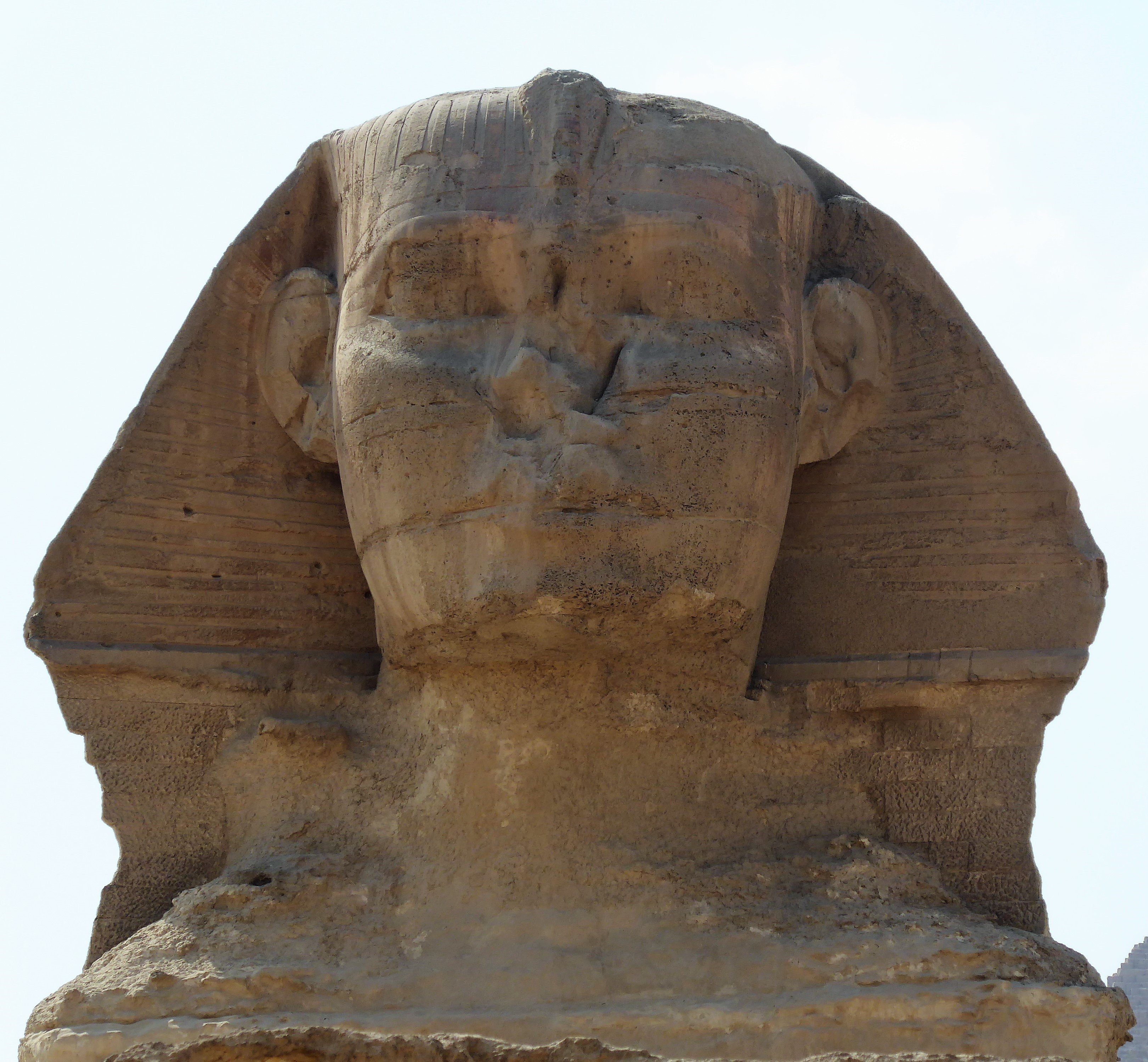
Pyramid of Menkaure
Part of the 4th Dynasty (2510 BC) is 65m high, 102m by 104m base (used to be 108m, 235 183 cubic meter, 51 degrees and is constructed of limestone and granite it also has three quite complete satellite pyramids on the South site – it’s not open to the public. On the East side of the main pyramid is the mortuary temple with scattered parts of the walls remaining although not very high, I think they were never robber to reuse as they estimate thy could weigh up to 220 tons! Having done some research about Menkaure you can’t find out as much information about his pyramid compared to others which I found to be strange, not much bout him either if compared to Khufu and Khafre. I did find some stunning stone carved statues of him in the Egyptian Museum in Cairo.
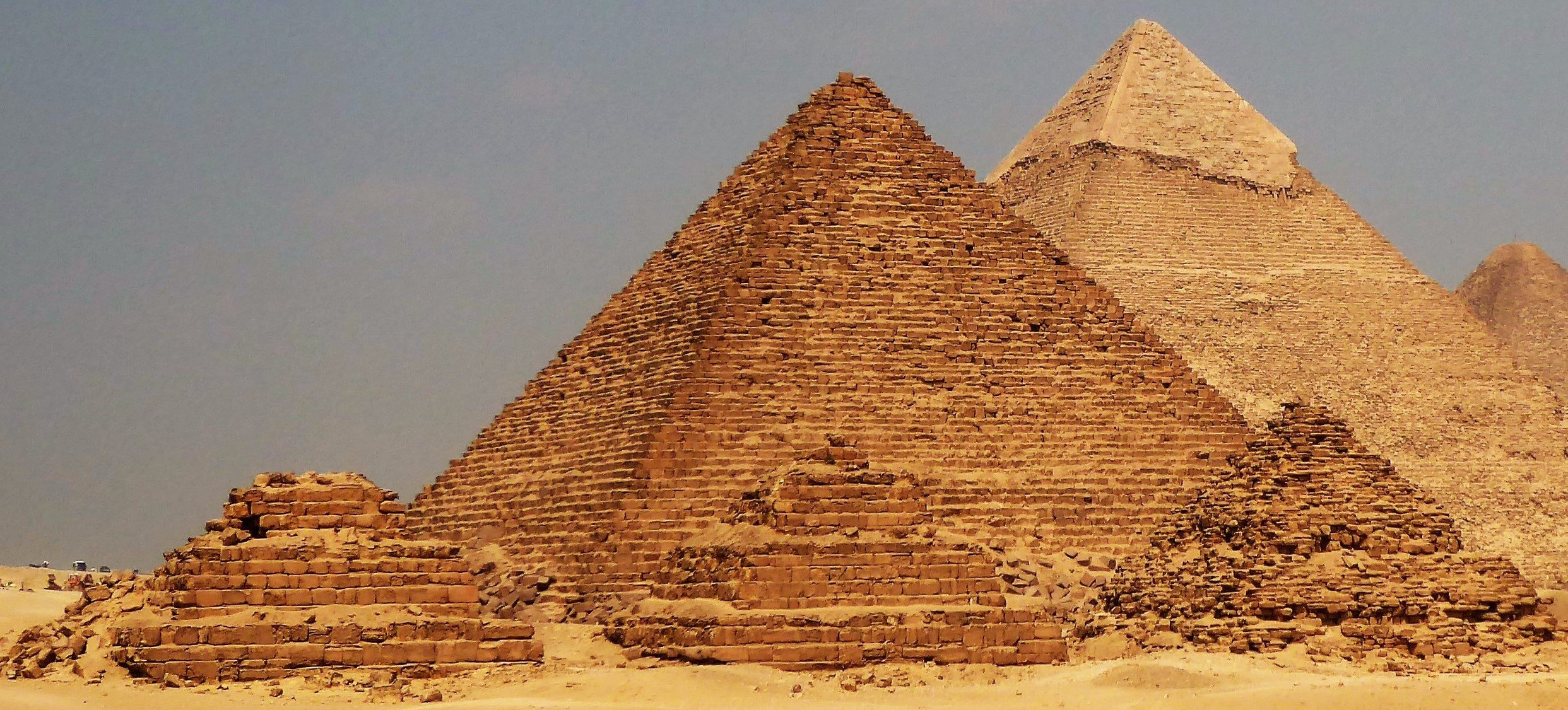
Tomb of Idu / Idut or Mastaba of Idu
A very small tomb no bigger than a garage for a motorbike but punches well above its weigh because of the interior. This was the first tomb I had entered with status intact, carving in stone and plaster, hieroglyphics and painted walls. He was quite a senior figure as he was buried so close to queens and kings. Idut had a few titles “Scribe of the Royal Documents in the presence of the King”, “Tenant of the Pyramid of Pepi I” and “Inspector of the wab-priests of the Pyramids of Khufu and Khafre” this all during the rain of Pepi I (son of Teti). Only a few steps down and you enter a vestibule, nothing much with bare walls, its when you enter the next room through a little corridor that you get the surprise. Five statues cut into niches on the left wall about 1.5m high, most of the paintwork is faded but enough to see the reds, blue, greys – they are said to depict Idu during different stages of his life and the very first one if of Qar (his son, also buried not far away). The back wall has a carved relief of Idut and his wife and on the right is a floor level statue of Idut (well half of him) with a false door above him and flanked on either side of this are more carved reliefs, the one on the right was is in fantastic condition! My first ancient Egyptian relief and perfect hieroglyphics I have seen! WOOOOHOOOOO!

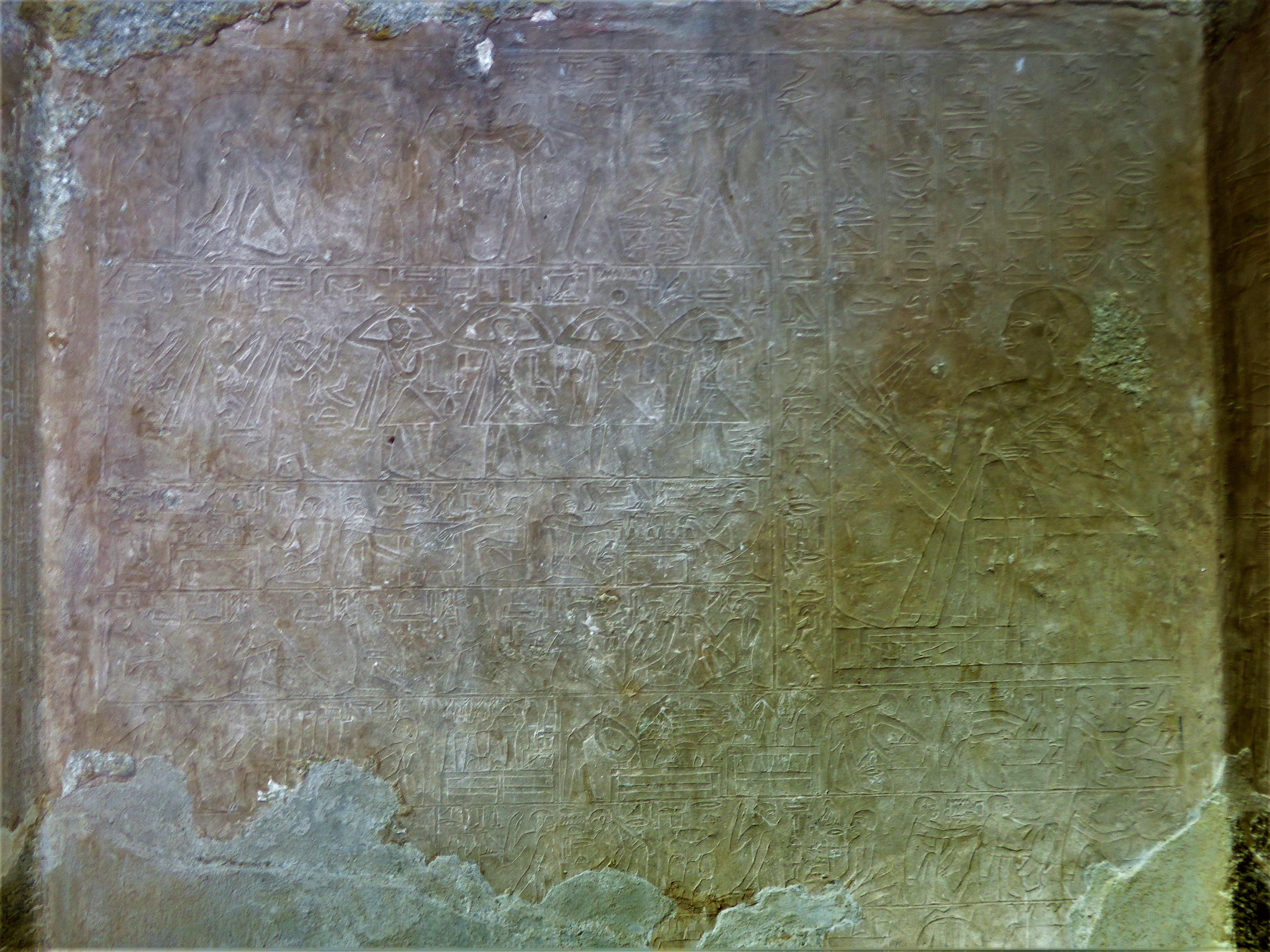
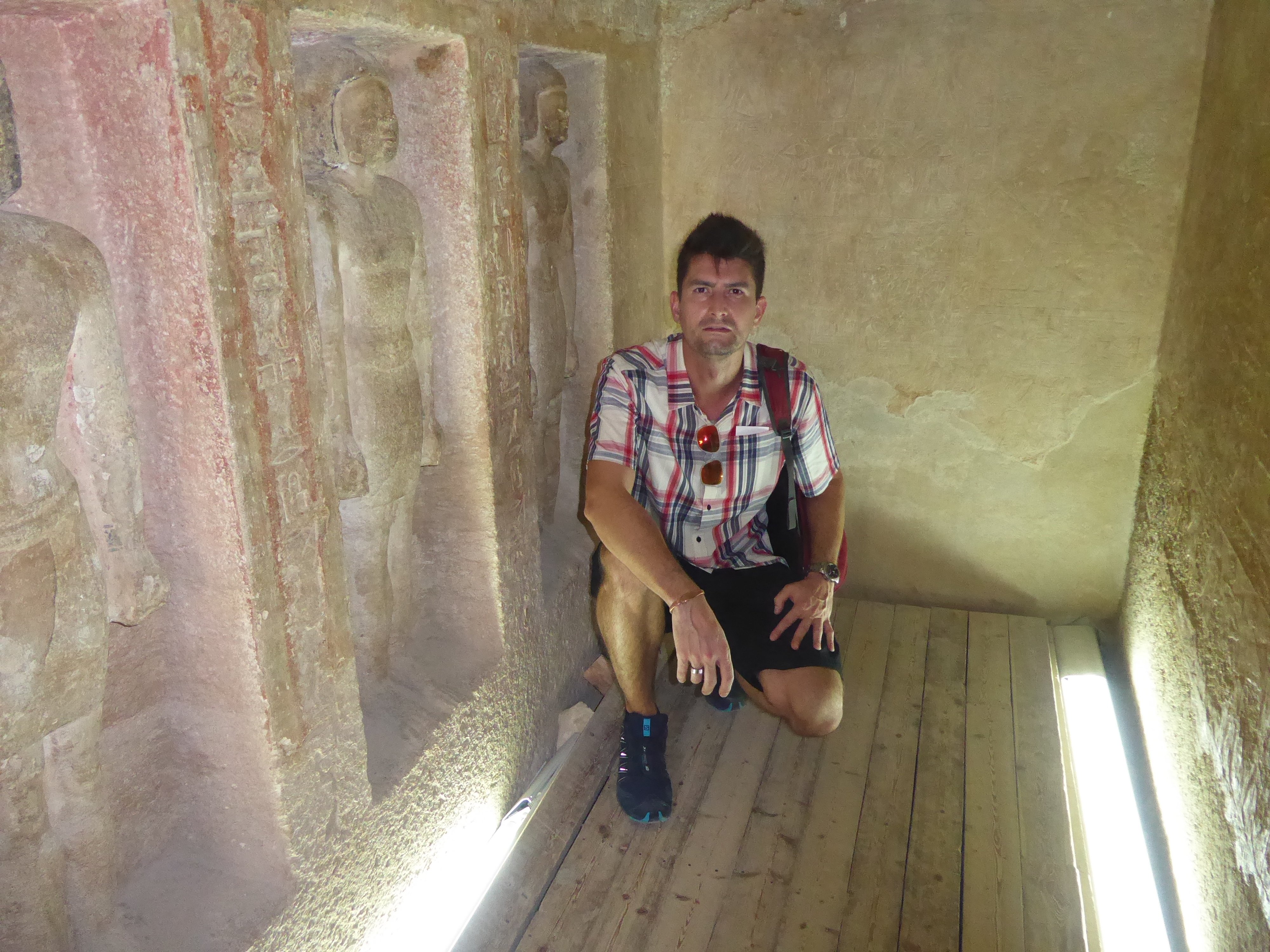
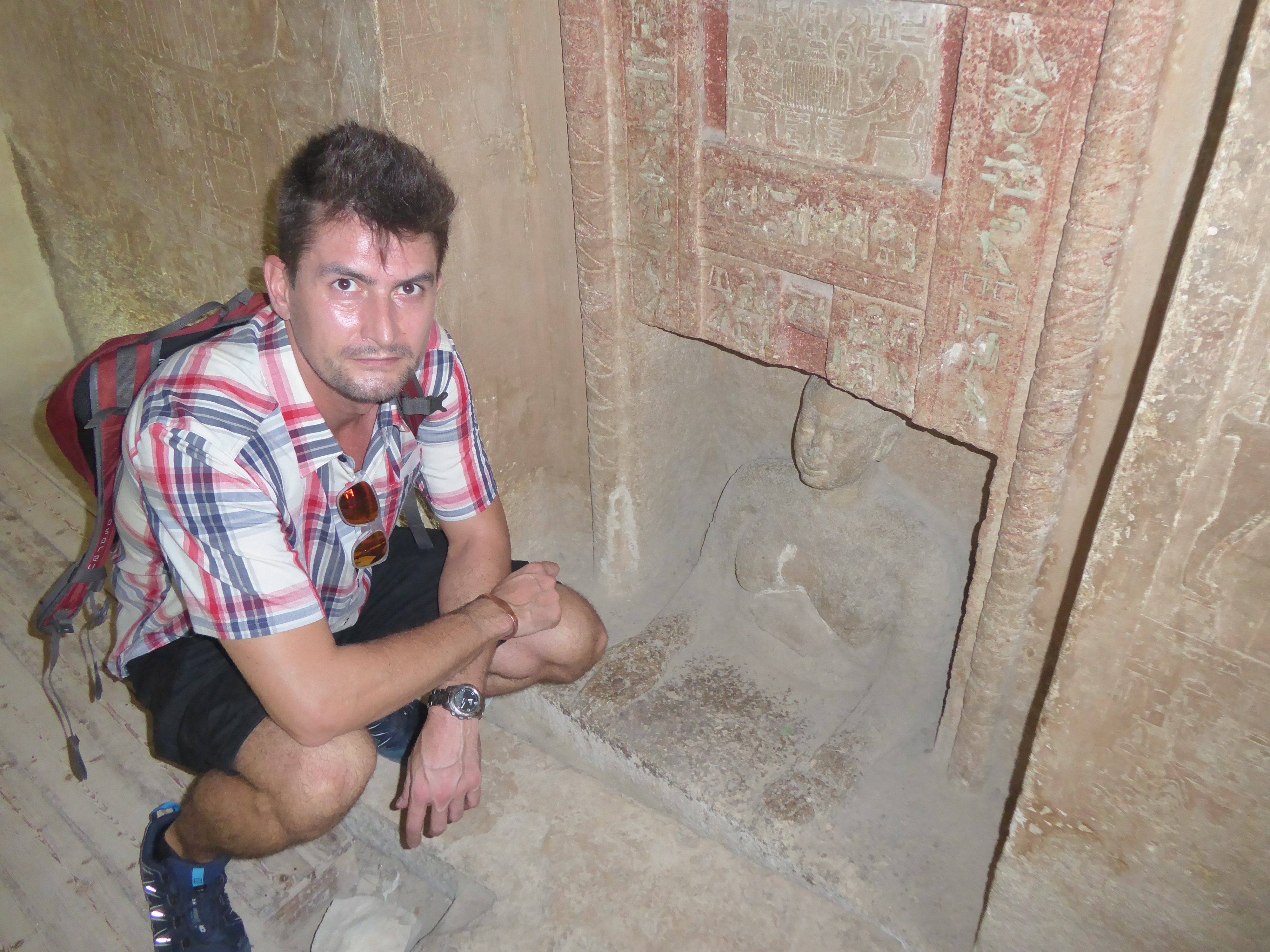
Before this trip I had a little family reunion in London, take a look if you like – London stop over for family reunion
….next instalment is a two part on some of what Cairo has to offer.
Here is Part 1 of my time in Cairo, or if you’d like to see my stop over in London take a look at the second link

At Long last. Thanks for the update. Very interesting. Very jealous.